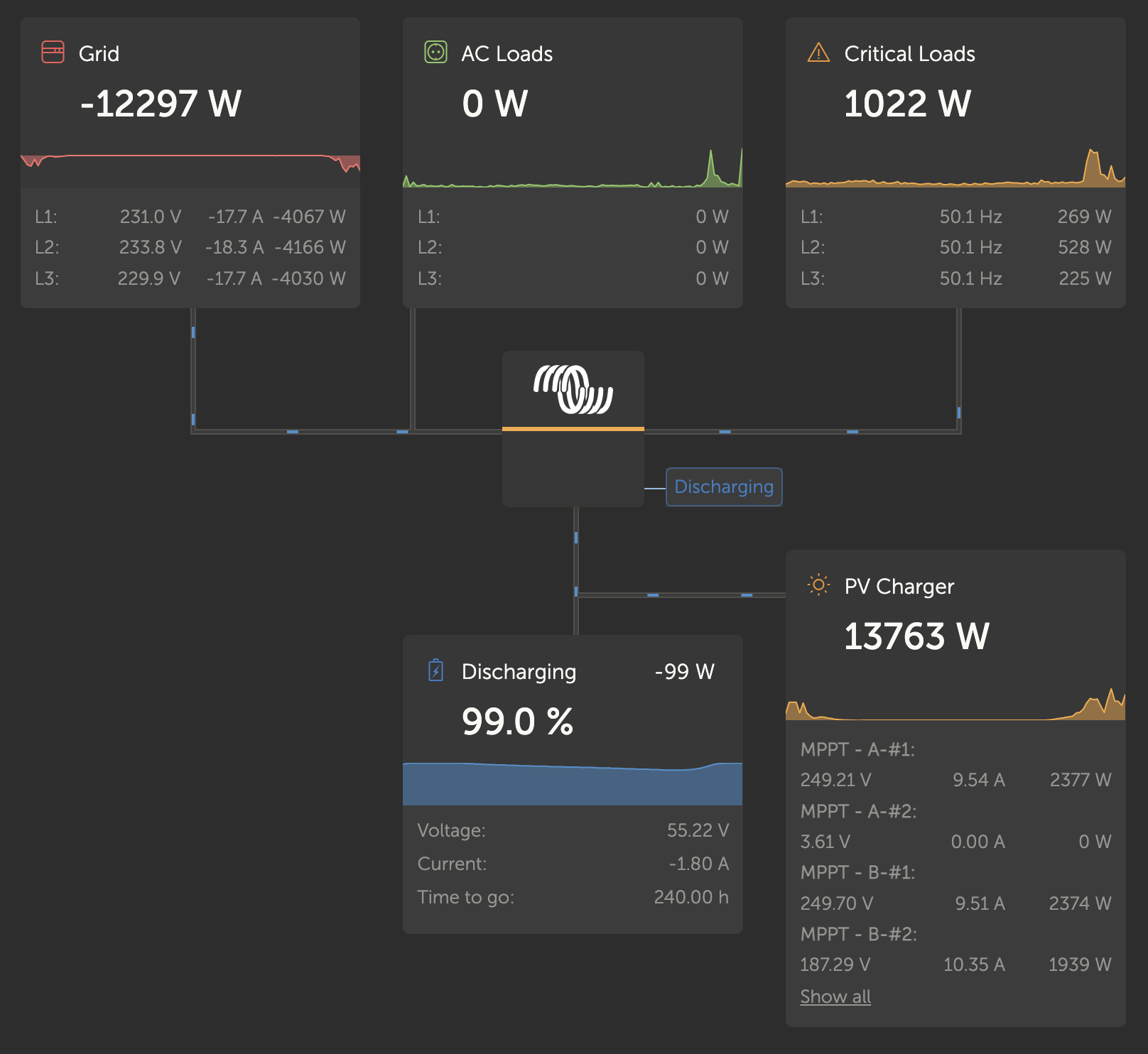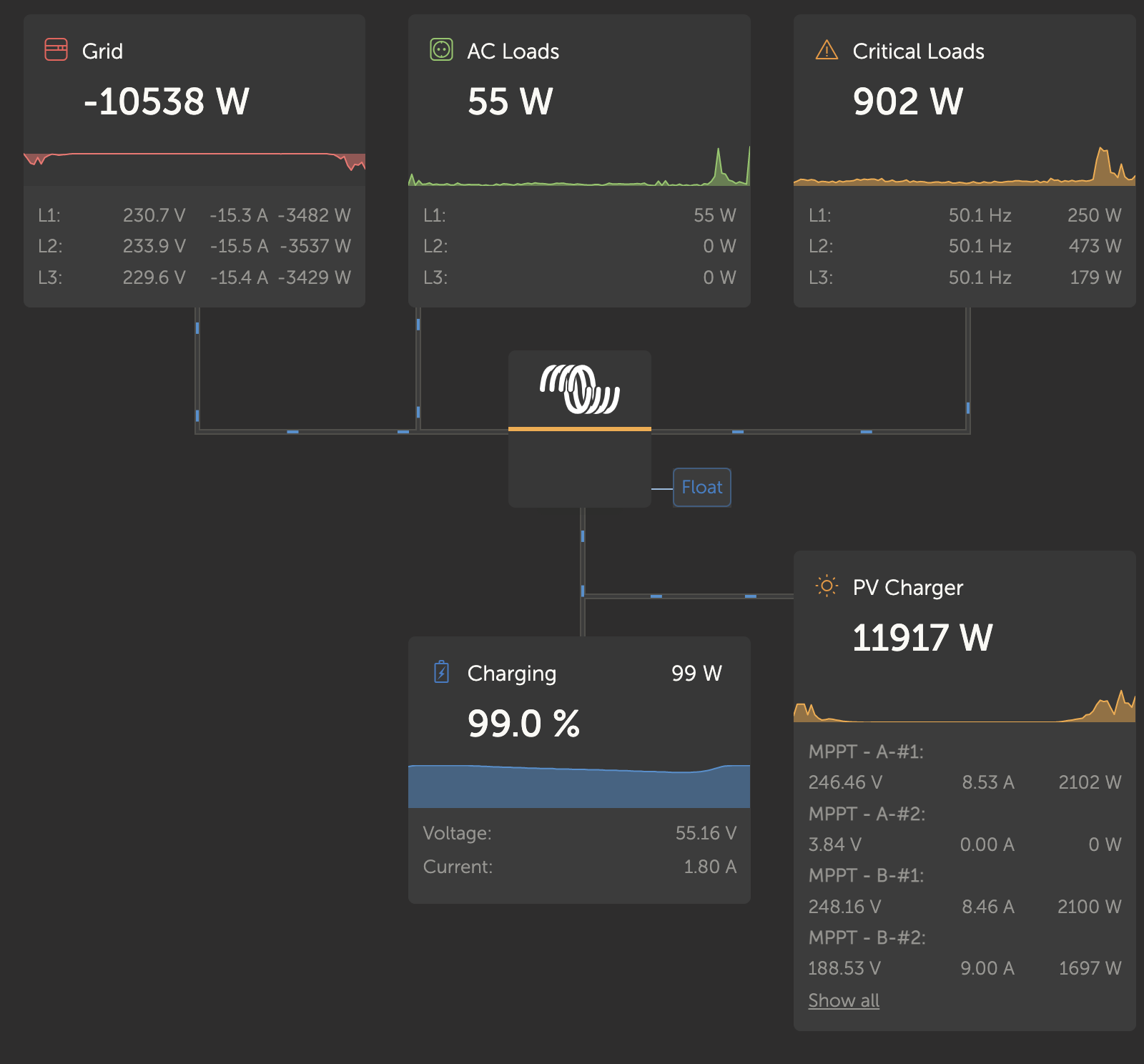I am having struggles to getting my Lynx Shunt reset the SOC to 100%.
My battery is full, hardly accepting any more Amps BUT the criteria for the shunt to reset to SOC are not met, as it does very small micro cycles, each time resetting the "Charge detection time".
Even setting this to as low as 1 minute does not help as the battery is constantly going from charging to idle to discharging and back.
My settings:
* Lynx Shunt:
Charged Voltage: 55.0V
Tail current: 0.70% (Total Ah of battery: 840Ah)
Charged Detection Time: 1 min
* All the MPPTs (5x 450/100):
Float & Absorption: 55.4V
* Multiplus II (3x 5000 / 3 phase):
Float & Absorption: 55.2V
I am feeding excess energy to the grid (ESS). Disabling this does not prevent the battery from doing these micro cycles.
The AC Loads on the Multiplus are constant. Initially I thought spikes might cause those micro cycles, but it's not that.
The battery is DIY with a JK BMS, no communication with Victron, no DVCC. I would like to keep it that way. Balancing happens at 3.45V and all cells are balanced with < 10mV deviation.
Any clues how I can prevent those micro cycles so that my shunt actually trips to 100% SOC?
Here a view of the battery, just a few seconds apart:


